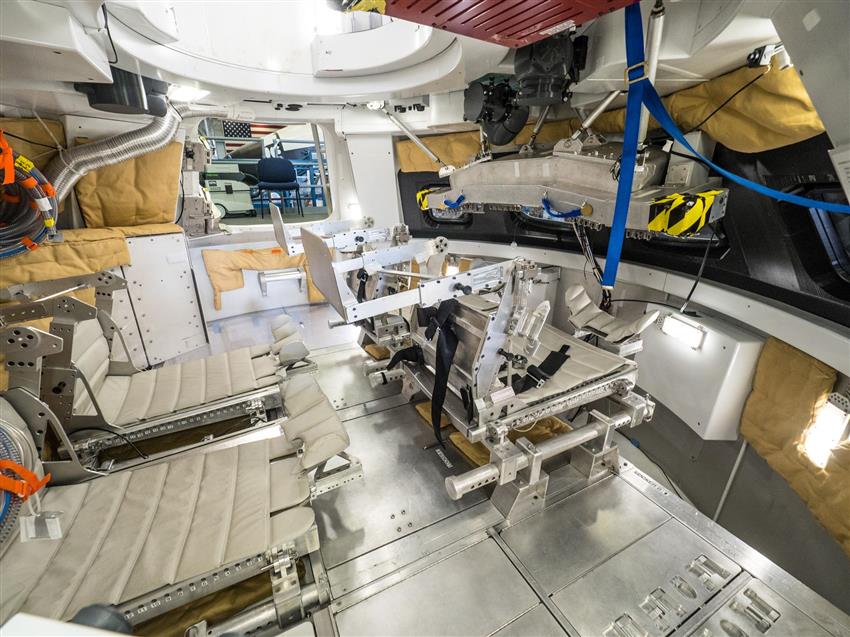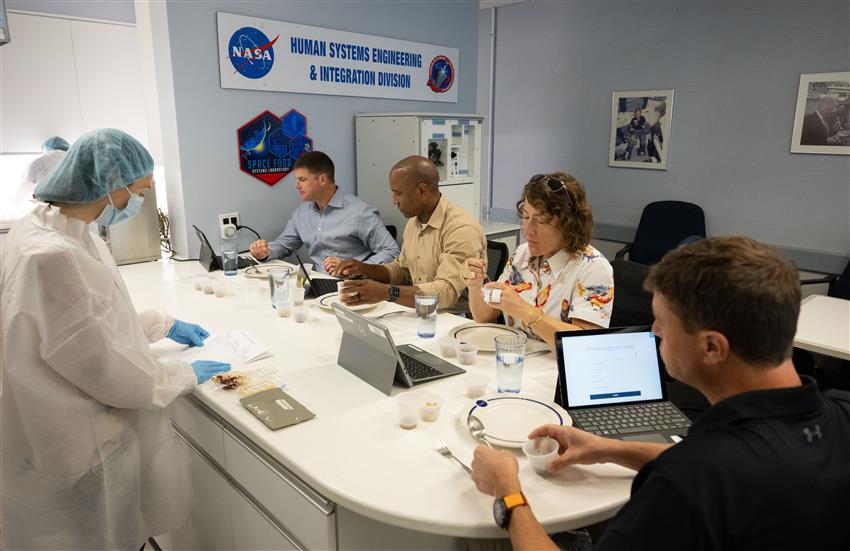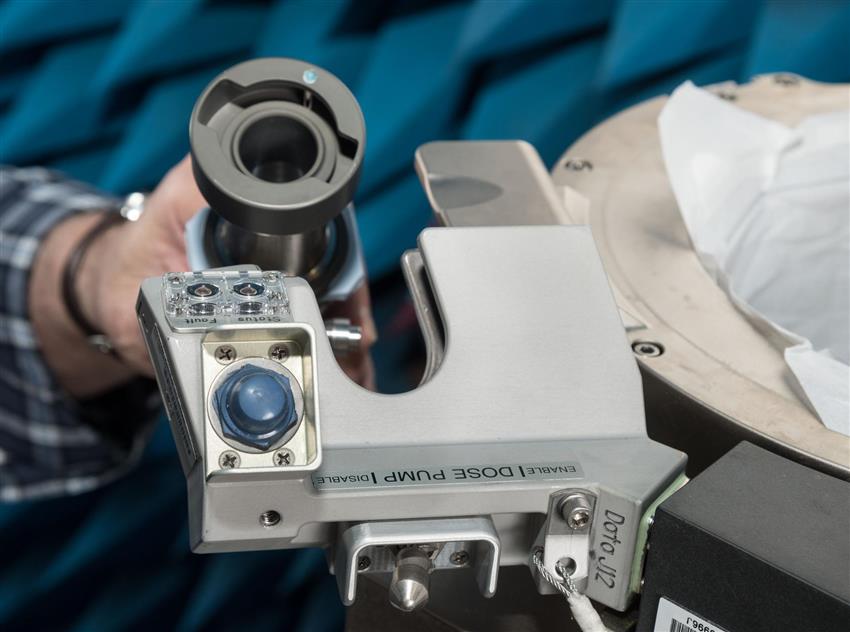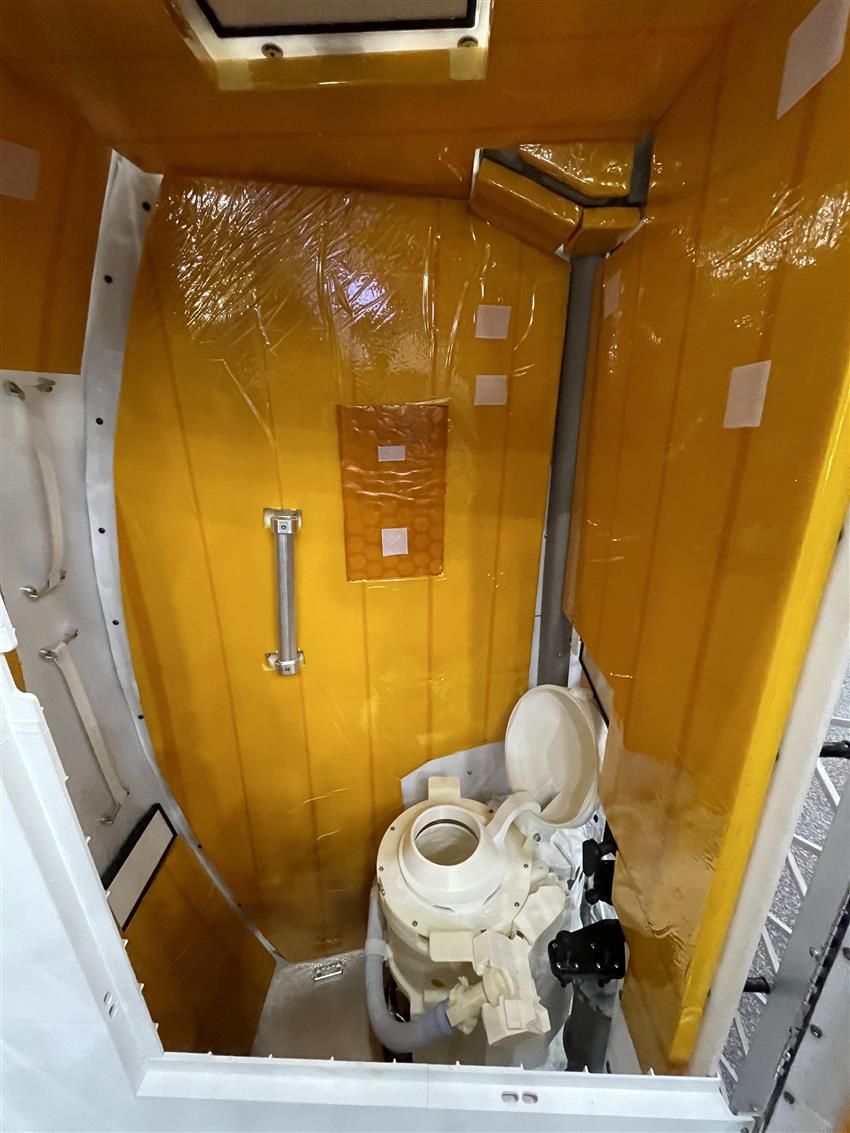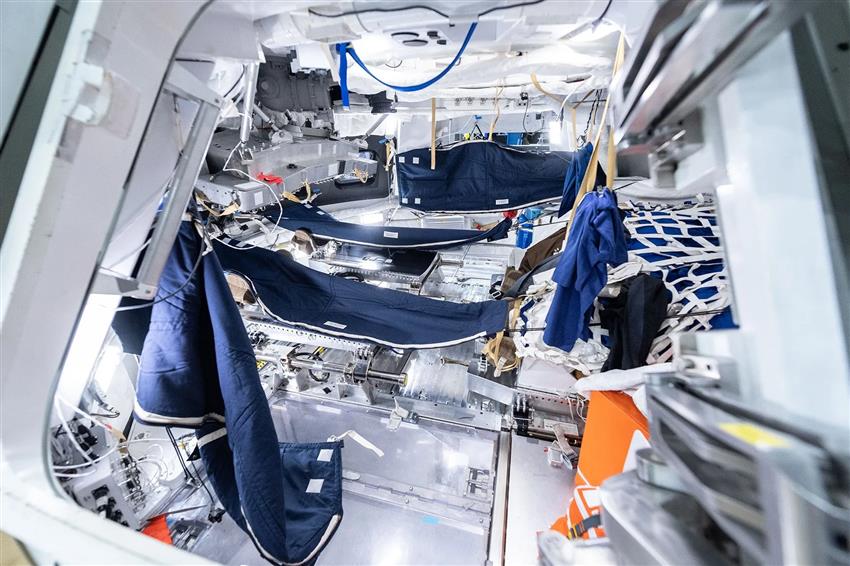Living aboard Orion
On this page
Are you an avid camper? Or maybe you prefer van life? If glamping is your thing, though, perhaps you wouldn't enjoy time aboard the Orion spacecraft! The Artemis II mission is going to take Canadian Space Agency (CSA) astronaut Jeremy Hansen and his three NASA crewmates on a campervan-sized capsule for a nearly 10-day journey around the Moon. And unlike camping on Earth, you can't take a hike if you get a little tired of your fellow campers! Thankfully, the crew will be able to stow Christina Koch's and Jeremy's seats until the day of return, giving them more room to move around during the flight. The backs of the commander and pilot seats will remain out, but their foot pans will be stowed.
Artemis II is a test flight to help prepare for future lunar missions. The crew will test the systems and procedures, but also refine techniques for everything that pertains to life in space: eating, sleeping, staying clean, exercising, and communicating with the ground while they are on Orion.
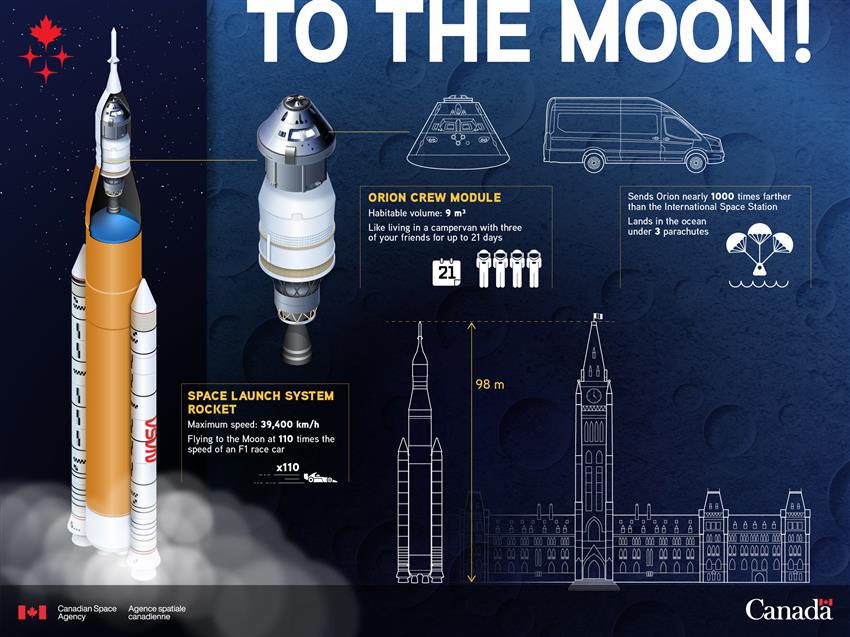
Text version - To the Moon! – Infographic
The Orion crew module is about as big as a campervan that can fit four humans. (Credit: CSA)
Eating in a capsule
Before the Artemis II astronauts go to space, NASA and CSA experts work with them to create a balanced menu for the mission. They choose meals based on nutritional value to meet basic needs, but also based on astronauts' personal tastes.
The menu items are chosen from the International Space Station (ISS) permanent menu. Given the limited space available on Orion though, there will be a number of limitations when it comes to food and beverages. For example, while there is a food warmer aboard, it has limited capacity - so the crew expects to eat most of its food… at room temperature! Some food allowed on the ISS will also not be available on Orion, like canned food because they are too heavy and bulky.
| Orion | ISS | |
|---|---|---|
| Menu | 11-day menu | Eight-day menu (three meals and a snack per day) |
| Water dispenser | Ambient water dispenser only | Ambient and hot water dispenser |
| Food warmer | Food warmer with limited capacity (i.e. power) | Food warmer |
| Canned food | No cans | Canned food allowed |
| Utensils | 1 spoon, 1 pair of scissors per astronaut |
2 forks, 2 spoons, 1 pair of scissors per astronaut |
| Beverages |
|
Based on astronaut preferences
|
Astronauts on the ISS also receive a few food items from their home country to share with their crewmates in addition to the permanent ISS menu. When you're far away from home for several months, it's always a treat to enjoy these. Aboard Orion, again because of space constraints, it's possible that Jeremy won't be able to access Canadian treats. But that's okay – his mission, while intense, doesn't last for very long!
Staying fit and strong
Inside the Orion spacecraft, astronauts will make sure they stay fit by doing a 30-minute workout nearly every day. This routine will help prevent their muscles and bones from getting weak because of the microgravity environment they will be living in.
The flywheel, a clever small piece of equipment, is essential for these workouts. It is placed under the door of the spaceship and acts as a step for the crew to get in and out. This flywheel works kind of like a yo-yo that can be adjusted to make exercises harder or easier. It can be used for activities like rowing and strength training like squats and deadlifts by generating up to 400 pounds of resistance.
Orion's exercise gear is super lightweight, only 14 kilograms, and it's smaller than a regular carry-on suitcase. In comparison, the equipment on the ISS weighs over 1800 kilograms and takes up a lot of space, nearly 80 square metres. This is a great example of exercise technology innovation!
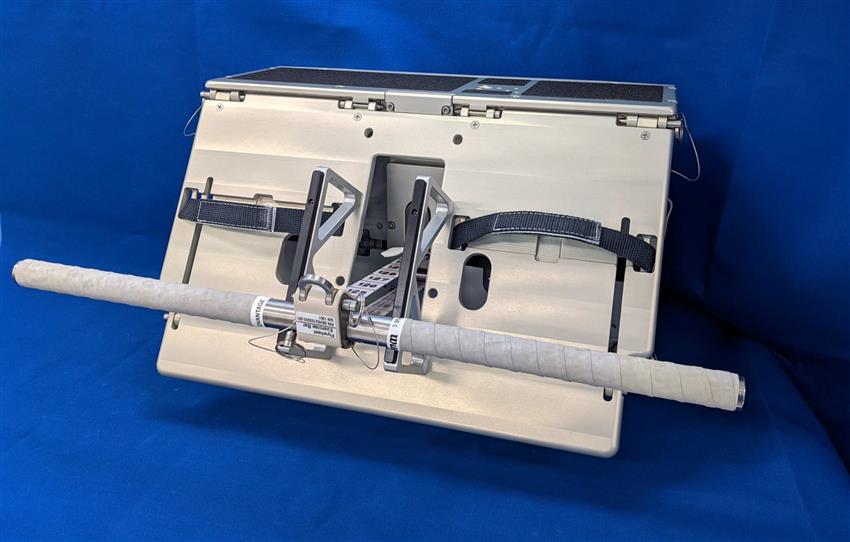
The Artemis II crew will exercise on Orion using a flywheel, a simple cable-based device for aerobic exercises like rowing and resistance workouts like squats and deadlifts. It works like a yo-yo, giving astronauts as much load as they put into it, maxing out at 181 kilograms (400 pounds). (Credit: NASA)
Keeping clean
As you can imagine, maintaining good hygiene in the tight quarters of Orion is essential. In space, it is not possible to take a shower – or do laundry! Astronauts must use products such as baby wipes, liquid soap with a bit of water on a washcloth, and no-rinse shampoo to stay clean. Their personal kits also include a toothbrush, toothpaste and shaving accessories.
Their basic hygiene routine will be very similar to that of astronauts aboard the ISS. But since their mission is much shorter, the Artemis II crew won't have to trim their nails or cut their hair in space, which can be tricky!
The space loo
On Orion, the crew will use the Universal Waste Management System. That's the fancy NASA name for the space toilet. This system uses a vacuum system and separates urine and feces. While the first one is vented out into space, the latter is stored for disposal. If there was a problem with the system during the mission, foldable urinals can be used to collect and dispose of urine in space, but the regular toilet would still be used for feces.
Staying connected with Earth
Yes, there's wifi in space. (Unsurprisingly, that's a question we get asked a lot by teenagers!) During the Artemis II mission, astronauts will be able to stay connected with Earth most of the time. Using communications satellites and the Deep Space Network, not only will they be in nearly constant communication with NASA's Mission Control Center, but they will also participate in events with the public and have conversations with their families.
Each crew member will also have regular private medical conferences with flight surgeons (aka space doctors) to discuss their health and well-being. There will be a medical kit on board Orion that includes everything from basic first aid items to diagnostic tools, such as a stethoscope and an electrocardiogram. The crew has already received medical training and could use these tools to provide data to physicians on the ground should a minor emergency arise. However, staying in touch with flight surgeons is also essential.
Catching some z's
The Artemis II mission's crew must be prepared for any eventuality. To guarantee the crew's rest, eight hours of sleep are scheduled into their timetable except for the first day, where their sleep schedule will be chopped up. For most of the mission, the four crewmembers will sleep at the same time in sleeping bags attached to the walls of the spacecraft.
Any time for fun?
The Artemis II schedule is jampacked, but the crew will still have some time to relax, which is important to keep them healthy and focused. They may not have access to music instruments and games like on the ISS, but they will have tablets and laptops to enjoy pre-loaded movies, music and games. And we bet that they will use much of what little free time they have to observe our beautiful planet Earth from the unique vantage point of the Moon. It's a view that only 24 humans had the privilege of seeing firsthand during the Apollo era.
CSA astronaut Jeremy Hansen is inspired and excited to see Earth from the Moon. (Credits: CSA, NASA)

